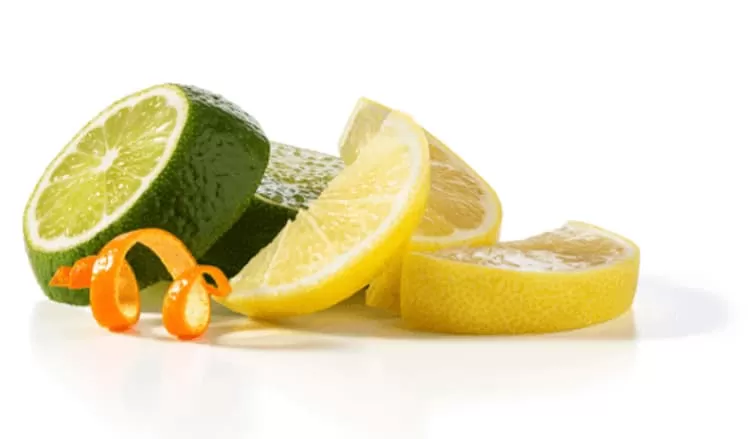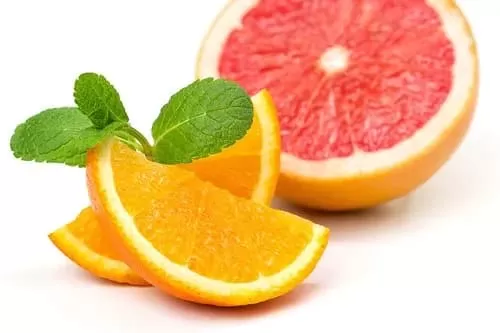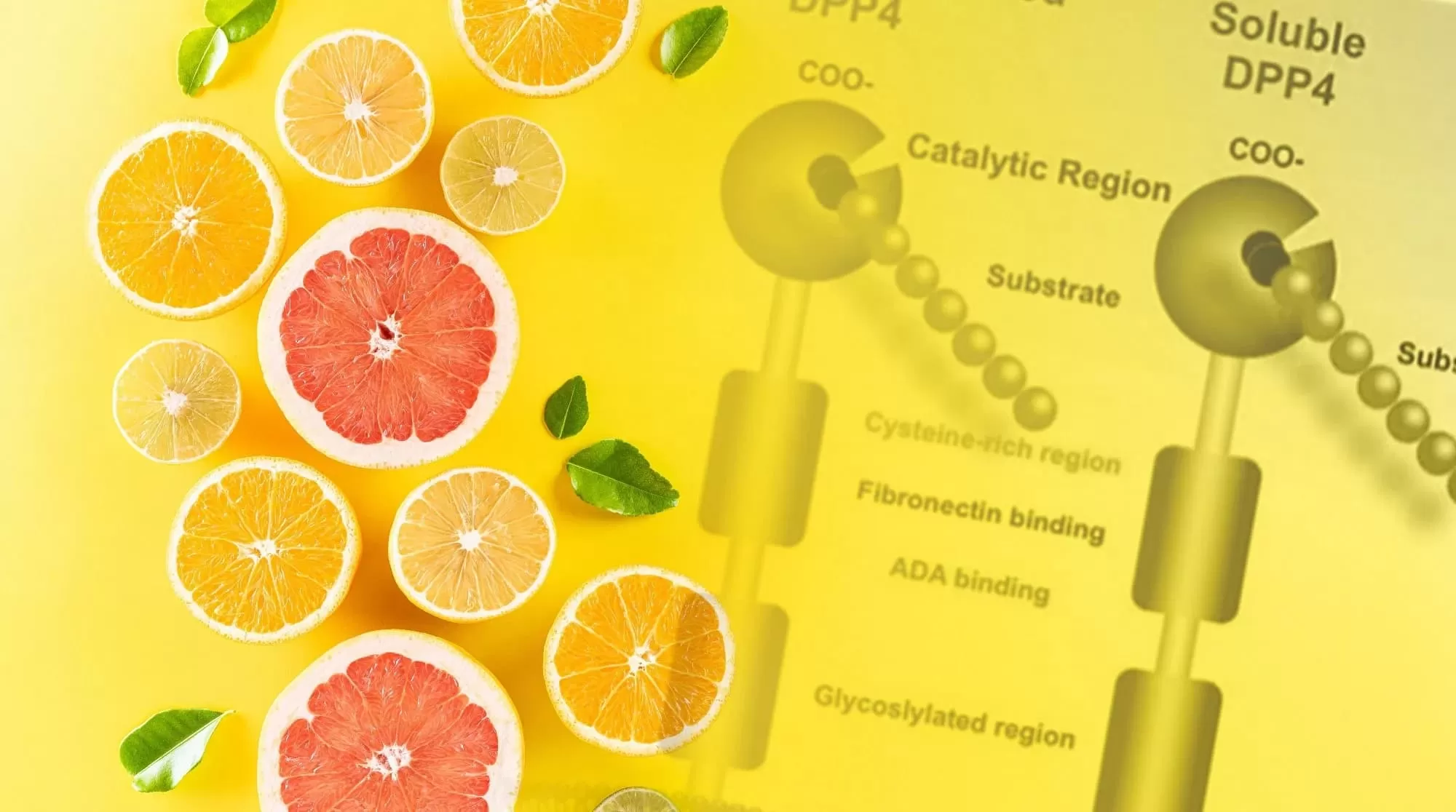- 0086-571-85302990
- sales@greenskybio.com
Citrus Bioflavonoids vs Vitamin C: Are They the Same?
2025-03-23

In the world of nutrition and dietary supplements, Citrus bioflavonoids and vitamin C are frequently touted for their health benefits. Both are associated with boosting immune function, enhancing skin health, and providing antioxidant protection. However, it is important to recognize that while they often work synergistically, Citrus bioflavonoids and vitamin C are distinct entities with unique characteristics. This article aims to delineate the differences between these two compounds, highlighting their individual roles in human health and the benefits of their combined use.
Defining Citrus bioflavonoids
Citrus bioflavonoids are a group of polyphenolic compounds found in citrus fruits such as oranges, lemons, grapefruits, and limes. They belong to the larger class of flavonoids, which are known for their antioxidant properties and their role in plant pigmentation. Common types of citrus bioflavonoids include Hesperidin, naringin, Quercetin, and rutin. These compounds are concentrated in the pulp, peel, and seeds of citrus fruits.
Bioflavonoids serve several functions in plants, including protection against ultraviolet radiation, pathogens, and herbivores. In human health, they are valued for their anti-inflammatory, cholesterol-lowering, and immune-supporting properties. The consumption of citrus bioflavonoids has been linked to improved cardiovascular health, reduced risk of chronic diseases, and enhanced cellular health.

Understanding Vitamin C
Vitamin C, known scientifically as ascorbic acid, is a water-soluble vitamin that is essential for human health. It is abundant in many fruits and vegetables, especially citrus fruits, strawberries, kiwi, and bell peppers. Unlike citrus bioflavonoids, vitamin C is a micronutrient that plays a critical role in various physiological functions.
Vitamin C is vital for collagen synthesis, promoting wound healing, and maintaining healthy skin and connective tissues. It is also a powerful antioxidant that protects cells from damage caused by free radicals and reactive oxygen species. Furthermore, vitamin C enhances the absorption of non-heme iron from plant-based sources, bolstering its role in preventing iron-deficiency anemia.

Differences Between Citrus Bioflavonoids and Vitamin C
1. Chemical Structure and Classification
Vitamin C and citrus bioflavonoids differ fundamentally in their chemical structure and classification. Vitamin C is a distinct molecule that functions primarily as a vitamin and antioxidant. In contrast, citrus bioflavonoids encompass a diverse range of polyphenolic compounds with varying structures and functions. Their classification as flavonoids indicates their broader role in plant chemistry and human health.
2. Biological Functions
While both vitamin C and citrus bioflavonoids offer antioxidant protection, their biological functions extend to different areas. Vitamin C is essential for collagen production, immune function, and improving iron absorption. In contrast, bioflavonoids are known for their ability to enhance blood circulation, strengthen capillary walls, and exhibit anti-inflammatory effects. The two compounds complement each other by supporting a range of physiological processes.
3. Synergistic Effects
Citrus bioflavonoids and vitamin C are often found together in citrus fruits and supplements, working together synergistically. Bioflavonoids can enhance the bioavailability and absorption of vitamin C, increasing its efficacy. This synergistic relationship underscores the importance of consuming whole foods rich in both compounds or supplements that incorporate both to maximize health benefits.
4. Dietary Sources
Vitamin C is exclusively found in fruits and vegetables, with citrus fruits being among the richest sources. Citrus bioflavonoids are predominantly found in citrus fruits but also occur in other fruits, nuts, and teas. While vitamin C is crucial for preventing deficiencies like scurvy, bioflavonoids are not classified as essential nutrients but contribute significantly to overall health.
5. Potential Health Benefits
The potential health benefits of vitamin C and citrus bioflavonoids overlap yet differ in certain areas. Vitamin C’s well-established role includes preventing scurvy, supporting immune function, and aiding skin health. Citrus bioflavonoids are recognized for their contributions to cardiovascular health, cholesterol management, and reducing inflammation. When consumed together, they offer complementary benefits that support holistic health.

Considerations for Their Use
While both vitamin C and citrus bioflavonoids are generally considered safe and beneficial, a few considerations can enhance their use:
- Balanced Diet: Incorporating a variety of fruits and vegetables into the diet ensures adequate intake of both vitamin C and citrus bioflavonoids, capitalizing on their synergistic effects.
- Supplementation: Choosing supplements that combine vitamin C with bioflavonoids may enhance absorption and efficacy, although individual needs should be assessed by healthcare professionals.
- Potential Allergens: Rare case reports indicate that some individuals may experience allergies or sensitivities to certain flavonoids, necessitating caution with concentrated supplements.
- Interactions: While vitamin C enhances iron absorption, bioflavonoids may interact with certain medications. Consulting with healthcare providers is advisable, particularly for those on medication or with specific health conditions.
Conclusion
Citrus bioflavonoids and vitamin C, though often grouped together, are distinct components that contribute uniquely to human health. Their synergistic relationship, when consumed in concert, offers a broad spectrum of benefits from antioxidant protection to improved cardiovascular and immune function. Understanding their differences and how they complement each other enables informed decisions about dietary choices and supplement use, fostering a balanced approach to maintaining and enhancing overall well-being. By appreciating both the unique properties and the cooperative effects of these compounds, individuals can leverage nature’s bounty to support health goals effectively.
- ▶ Hesperidin
- ▶ citrus bioflavonoids
- ▶ plant extract
- ▶ lycopene
- ▶ Diosmin
- ▶ Grape seed extract
- ▶ Sea buckthorn Juice Powder
- ▶ Beetroot powder
- ▶ Hops Extract
- ▶ Artichoke Extract
- ▶ Reishi mushroom extract
- ▶ Astaxanthin
- ▶ Green Tea Extract
- ▶ Curcumin Extract
- ▶ Horse Chestnut Extract
- ▶ Other Problems
- ▶ Boswellia Serrata Extract
- ▶ Resveratrol Extract
- ▶ Marigold Extract
- ▶ Grape Leaf Extract
- ▶ blog3
- ▶ blog4
- ▶ blog5
-
Are Bioflavonoids Good for Skin?
2025-03-23
-
Do citrus bioflavonoids contain quercetin?
2025-03-23
-
What Are Citrus Bioflavonoids Used For?
2025-03-23
-
Mangosteen extract powder
2025-03-23
-
Giant Knotweed Extract
2025-03-23
-
Pomegranate Extract
2025-03-23
-
Astaxanthin
2025-03-23
-
Acerola Juice Powder
2025-03-23
-
Rose Hip Extract
2025-03-23
-
Tongkat Ali Extract Powder
2025-03-23
-
Moringa powder
2025-03-23
-
Genistein
2025-03-23
-
Tormentil Extract
2025-03-23






























